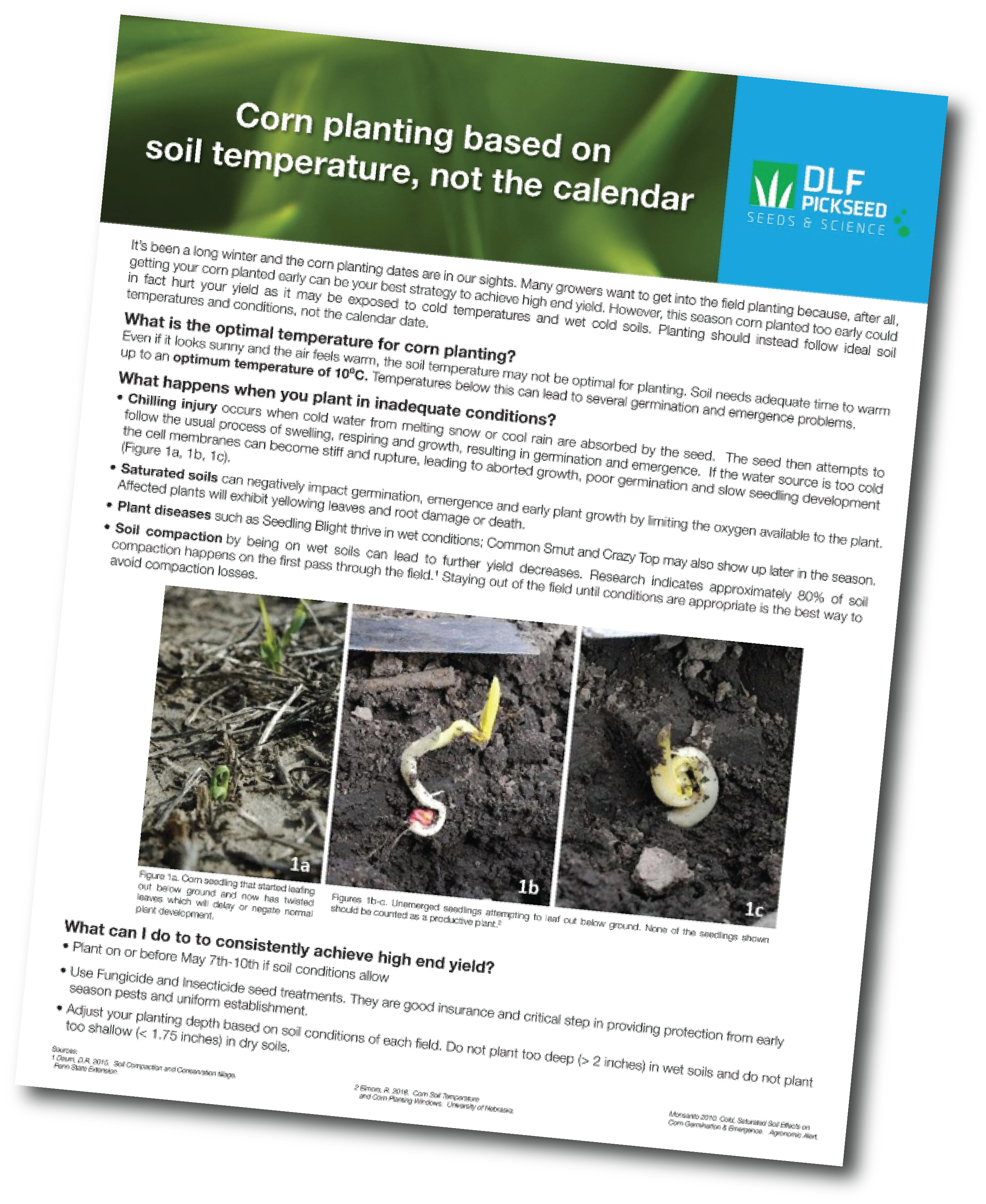Corn planting based on soil temperature, not the calendar
It has been a long winter and the corn planting dates are in our sights. Many growers want to get into the field planting, because after all, getting your corn planted early can be your best strategy to achieve high end yield. However, this season corn planted too early could in fact hurt your yield as it may be exposed to cold temperatures and wet cold soils. Planting should instead follow ideal soil temperatures and conditions, not the calendar date.
What is the optimal temperature for corn planting?
Even if it looks sunny and the air feels warm, the soil temperature may not be optimal for planting. Soil needs adequate time to warm up to an optimum temperature of 10oC. Temperatures below this can lead to several germination and emergence problems.
What happens when you plant in inadequate conditions?
Chilling injury occurs when cold water from melting snow or cool rain are absorbed by the seed. The seed then attempts to follow the usual process of swelling, respiring and growth, resulting in germination and emergence. If the water source is too cold the cell membranes can become stiff and rupture, leading to aborted growth, poor germination and slow seedling development (Figure 1a, 1b and 1c)
Saturated soils can negatively impact germination, emergence and early plant growth by limiting the oxygen available to the plant. Affected plants will exhibit yellowing leaves and root damage or death
Plant diseases such as Seedling Blight thrive in wet conditions; Common Smut and Crazy Top may also show up later in the season
Soil compaction by being on wet soils can lead to further yield decreases. Research indicates approximately 80% of wet soil compaction happens on the first pass through the field.1 Staying out of the field until conditions are appropriate is the best way to avoid compaction losses.
What can I do to consistently achieve high end yield?
Plant on or before May 7th-10th if soil conditions allow
Use Fungicide and Insecticide seed treatments. They are good insurance and a critical step in providing protection from early season pests and uniform establishment.
Adjust your planting depth based on soil conditions of each field. Do not plant too deep (>2 inches) in wet soils and do not plant too shallow (<1.75) in dry soils.
Sources:
1 Daum, D.R. 2015. Soil Compaction and Conservation tillage. Penn State Extension.
2 Elmore, R. 2018. Corn Soil Temperature and Corn Planting Windows. University of Nebraska.
Monsanto 2010. Cold, Saturated Soil Effects on Corn Germination & Emergence. Agronomic Alert.


